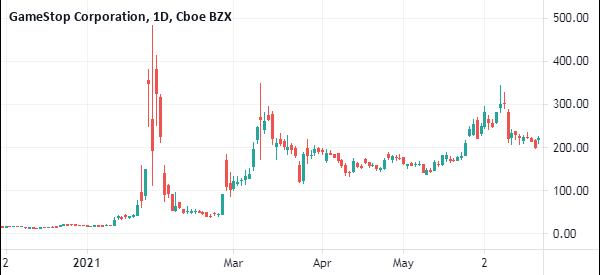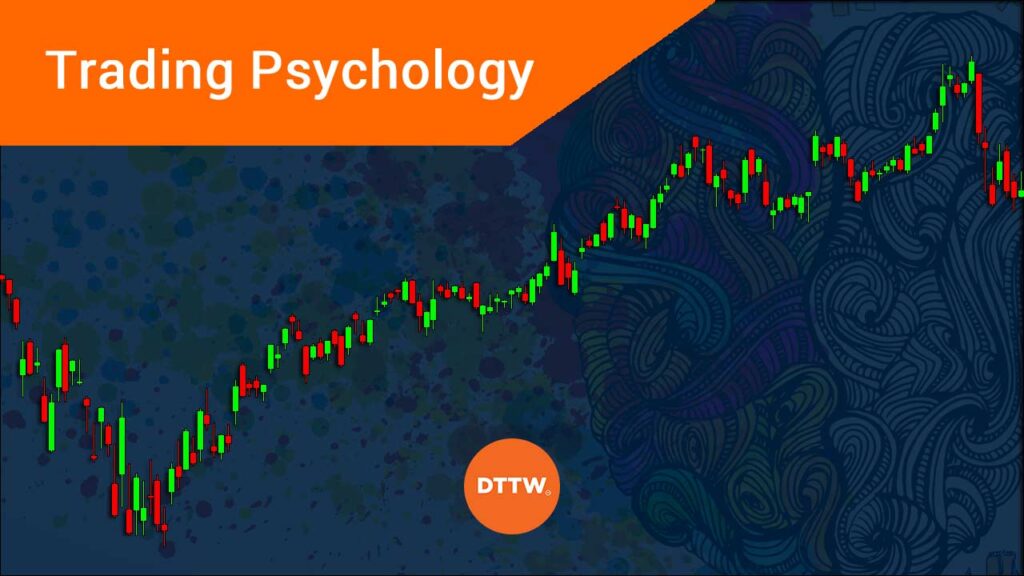Psychology is one of the important concepts in the financial market. It is also one of the least understood. Indeed, we have seen some experienced traders make substantial losses simply because of failing to manage their emotions.
In this article, we will look at the three most common psychological trading mistakes and how to avoid them.
Fear of Missing Out (FOMO)
Fear of Missing Out is a psychological mistake that is common among experienced and newbie traders. As the name suggests, it is the process of buying or shorting an asset because everyone seems to be doing it. We experienced a lot of FOMO trading during the coronavirus pandemic and during the Wall Street Bets.
In the first quarter of 2021, heavily shorted companies like Clover Health and GameStop (some of the most famous meme stocks) rose substantially. As a result, many investors rushed to buy the stock even though the fundamentals were not correct.
As a result, traders who bought GME at close to $500 made substantial losses when the shares dropped to below $50, as shown below.


GameStop stock price (January-June 2021)We also experienced a lot of FOMO in the cryptocurrency industry. As Bitcoin price surged, we saw many smaller coins jump simply because investors wanted to be a part of the next big thing. Indeed, the total market capitalization of all cryptocurrencies tracked by CoinMarketCap surged to more than $2 trillion in 2021.
How to avoid FOMO: Strategies
There are several strategies to avoid FOMO in trading. Some of the most popular ways are:
- Being content (a.k.a. don’t be greedy) – You should be content with your average returns even when they are not as good as other people.
- Focus on what you know – The next strategy is being contented with what you know about. Just stick to your strategy.
- Look at technical levels – You need to look at key technical levels. For example, if a stock rises from $10 to $13, you could look at key levels. One way of doing this is by doing a multi-timeframe analysis.
- Have a trading plan – You should have a trading plan and stick with it. For example, always insist on writing down a trading journal.
To be clear, FOMO is a common thing that even the most experienced investors go through. A good example happened a few years ago when Bill Ackman invested in Valeant Pharmaceuticals. This was the first time that he invested in a pharmaceutical company. At the end, the stock crashed and he lost more than $4 billion.
»7 emotions that must not be underestimated«
Revenge trading
Let us explain what is revenge trading with an example. A few years ago, We had a good trading plan that called for making a $2,000 per week. So, after a week of successful trading, our account had a profit of $1,980. We was $20 short of my $2,000 goal.
So, We did what many traders do. We opened a trade with the goal of making the $20. And since We had not done any proper research before then, it started to bleed. Within a few minutes, most of our earlier profits were undone.
As part of our revenge trading, We decided to open a bigger trade in the opposite direction. Fortunately for us, We was able to recoup some of our losses. However, in most cases, traders who do that end up losing a substantial amount of money.
So, when we say that every decision you make must be based on some analysis (technical, fundamental, price action… whatever you prefer), we know this from experience. And it’s advice that applies to everyone, especially experienced traders, because sometimes too much confidence can be paid for heavily.
As you can see, revenge trading is when you try to open a trade in order to recover some of your losses. For example, if you are short a stock and its price drops, you can close that trade and then go long.
Tips to reduce risks from revenge trading
There are several strategies you can use to reduce these risks:
- Position-sizing – When you size your trades well, it will ensure that you can be able to take all losses comfortably. For example, if you have a $10,000 account, you can be able to comfortably take a $100 loss.
- Leverage – Reduce the amount of leverage you are using since a highly levered account can lead to substantial losses.
- Have a plan – Next, you should have an entry and exit plan for all trades that you have. This means that you should know when to enter and leave a trade.
- Be comfortable with your losses.
Gambler’s fallacy
Gambler’s fallacy is a common concept that is also known as the Monte Carlo fallacy. It happens when an investor or a trader believes that a certain event will happen or not happen based on the results of the previous events.
This concept is based on two ways. First, there is the belief that if an independent event happened several times in the past, it is less likely to occur in the future. Second, there is a belief that if an event happened less frequently in the past, it will more likely happen in the future.
A good example of this is when you have a dice with six sides. If you roll dice three times and it lands on two, the odds of this happening in the future are ⅙.
The same concept is seen in the financial market and is one of the most common mistakes you could ever do. You should avoid it using the following tips.
- All trades are different – You should realize that all trades are different in the market.
- Have a plan (again) – Always have a plan that is based on a quantitative and qualitative approach.
- Follow what you know.
»Why Day Trading is not Gambling«
Final thoughts
In this article, we have looked at what psychology is and the three popular mistakes in the market. We have also looked at some of the top strategies to avoid making these mistakes.
External Useful Resources
- Why do Most Day Traders Fail? Learn to Avoid Beginner Mistakes – Earn2Trade
